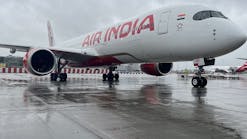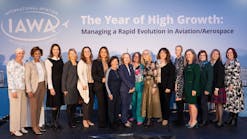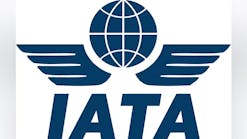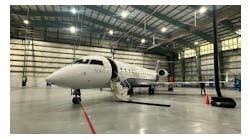New Rules in Development for Aircraft and Parts Manufacturing
By Fred Workley
March 1998
Fred Workley is the president of Workley Aircraft and Maintenance Inc. at Dulles International Airport, director of maintenance for IJC, a Part 135 certificate holder, and technical advisor to the National Air Transportation Association. He is an aviation maintenance technician with inspection authorization, holds a general radiotelephone license, ATP, FE, CFI-I, and is a ground instructor.
The Depart-ment of Transportation, Federal Aviation Administration 14 CFR Part 1, 21, and 45 covering production, certification, and parts manufacturing are currently being rewritten and will eventually appear in a Notice of Proposed Rulemaking (NPRM). As is, this draft is expected to establish a single production approval process to replace the various methods of approval that are now used for products, parts, and appliances. The proposal is also expected to separate the design approval and production approval aspects for the present Parts Manufacturer Approval (PMA) parts and Technical Standard Order Authorization (TSOA) articles. Additionally, the proposal would revise the aircraft parts marking requirements to improve traceability of aircraft parts and to revise certain other requirements to better reflect the current manufacturing environment.
The committees indicate that the proposed revisions are needed to standardize the design and production approval processes, to recognize the global nature of aircraft and parts manufacturing, and to help eliminate the potential for installing unapproved parts on FAA type certificated aircraft. These statements result from a cooperative effort of the aviation industry and the FAA through the Aviation Rulemaking Advisory Committee (ARAC).
The draft preamble and rule, as developed to this point in time, has been a committee activity which has relied on both negotiation and consensus building, but it does not represent where the preamble and rule may eventually end up. The committees continue to receive input, and in late November 1997, the FAA AGC (office of the chief council) gave the working group an enormous set of significant comments.
Also, AIR-200 management called a special meeting of the directorate staff which developed a long list of comments — many of which are very significant. These will most certainly change the preamble and possibly the substance of the proposed rule. Both working groups, which are now combined, effectively have a new starting point. It will probably be some time before the final rule draft is available and is in the form of a NPRM which will be then submitted to the ARAC Interest Group for review and forwarding as a final recommendation to the FAA.
Why change it? Currently, four types of production approvals are available under Part 21. They include an Approved Production Inspection System (APIS) (subpart F); Production Certificates (subpart G); Approval of Materials, Parts, Processes, and Appliances, also known as PMAs (subpart K); and Technical Standard Order Authorizations (subpart O).
In part because the rules governing each production approval were developed at different times, each production approval has a different quality assurance system and different procedural requirements. As a result, persons producing the same part to the same design standards under different production approvals, may have different requirements. Though it is primarily the terminology of the requirements that differ rather than the substance, these differences in the regulations have created interpretation differences within the aviation industry and among FAA field office personnel that have resulted in a lack of standardization among types of production approvals.
The FAA does not have evidence that these inconsistencies have resulted in any different levels of safety among products or parts, nor does the FAA have evidence that the design approvals have not always been made to the appropriate airworthiness standard. However, the inconsistencies have led to administrative problems and have contributed to a perceived difference in standards by some individuals in the aviation community.
Manufacturing Environment has changed
The U.S. manufacturing environment has changed in several respects that are not reflected in current regulations. When these regulations were
established, a relatively small number of companies manufactured either the complete aircraft, aircraft engines and propellers, or just propellers under a type certificate and production certificate. These manufacturers typically licensed and oversaw the manufacturing of replacement parts for their products. The environment has greatly changed, particularly in the production of replacement parts. Also, the U.S. aircraft fleet is aging, and many companies that originally manufactured the complete aircraft, aircraft engine or propeller, and that oversaw replacement part manufacturing have gone out of business. Thus, the manufacture of replacement parts is a major business and competition is increasing.
In addition, aircraft production and parts production are increasingly global, whether the manufacturer is foreign or in the United States. Often manufacturing is under the control of a consortium of U.S. and foreign manufacturers. Based on the old way of doing business, a few major U.S. TC/PC holders, PMA holders, STC holders, and TSOA holders constituted the industry. With airline deregulation and globalization, major changes have and are still taking place in the aviation community. These changes have significantly increased competition among airlines which have in turn passed their competitive pressures on to their suppliers.
The airlines' demand for lower costs has resulted in a surge of PMA and STC activity as additional manufacturers have competitively entered the replacement parts market. This activity has already provided individual airlines with millions of dollars in annual savings on the purchase of new replacement parts. An increase in product liability costs and other factors has resulted in more aircraft that are out of production, are not supported by the original TC/PC holder, and are depending on the PMA process for replacement parts.
In addition, the perception of the airworthiness of replacement parts by elements of the aviation industry is that products or parts produced under an FAA production certificate are more reliable than parts produced under some other FAA form of approval. Some elements of the aviation industry lack confidence that PMA parts meet the appropriate airworthiness requirements.
While, in reality, the same standards of airworthiness exist for all FAA production approvals. This perception persists among foreign buyers and puts manufacturers who do not have a production certificate at a competitive disadvantage.
To the extent that this perception is based on administrative differences, standardizing the system so that all parts manufacturers will have separate design and production approvals could help to eliminate any perceived inequality among either design or production approvals.
The above reasons, in addition to others, are being considered in the review of Part 21. The committees' eventual set of change proposals are expected to provide a greater credibility to the PMA and STC process, assure a continuation of the excellent safety of flight record of replacement parts and articles, and simplify all certification procedures. There has been significant interest among those in the general aviation sector over the impact of these new draft proposals to change Part 21. All interested parties are encouraged to get involved with the ARAC process and continue to make input.
Participation in the process is one way to have your voice heard. When the NPRM is available through the Federal Register, take time to read and study the proposed changes to Part 21 and submit your written comments per the instructions in the NPRM.
You need to determine if the proposed changes to Part 21 are needed to assure a safe growth of the competitive replacement parts segment of the aviation industry.





